Standards and Certification Chronology
Defining Events in ASME Standards & Certification
Additional milestone moments of the ASME Standards and Conformity Assessment Departments. For the latest news and activities, visit Standards & Certification.
- 1884
- Formation of a committee on Performance Test Codes.
- 1884
- Code for the Conduct of Trials of Steam Boilers, report issued.
- 1887
- Standard for the Diameter and Overall Dimensions of Pipe and Its Threaded Ends report issued.
- May 1889
- Mr. James W. See, a member of the Society, called attention to the great need for the registration of standards and proposed that steps be taken to have the U.S. Government setup a Bureau of Standards to operate similarly to the Patent Department.
- 1894
- Standard Flange Templates report issued.
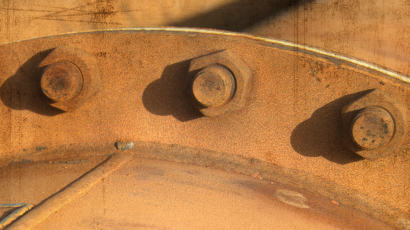
- 1895
- Society policy set on ASME sanctioned “Standards”, reports can be called “Standards” and are to be revised and updated.
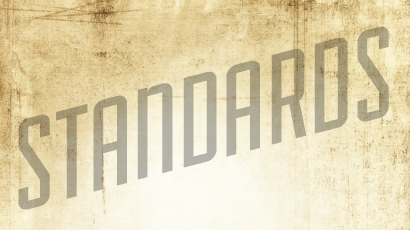
- 1899
- Standard for Divergences in Flange Diameters issued.
- 1902
- Standard for Pipe Unions issued.
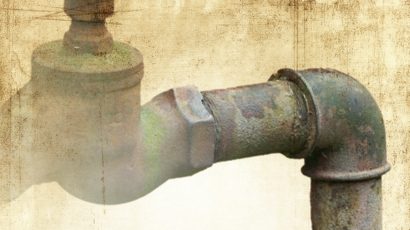
- 1901
- Rules for Conducting Tests of Gas and Oil issued.
- 1901
- Test Code for Internal-Combustion Engines issued.
- March 1901
- The organization of the National Bureau of Standards was authorized by Congress. Today, this organization is known as the National Institute of Standards and Technology.
- 1902
- Rules for Conducting Steam-Engine Tests issued.
- 1907
- Standard Proportions for Machine Screws issued.
- April 1909
- The formation of the Committee on Power Tests, forerunner to the Standardization and Testing Board (combining with the Standardization Committee).

- April 1909
- Formation of a committee to update, revise, unify and standardize all the present codes of the Society.

- April 1911
- Formation of a committee on Standardization, forerunner to the Standardization and Testing Board (combining with the Performance Test Codes Committee).

- September 1911
- Formation of a committee to formulate a uniform set of standard specifications for the construction of steam boilers and pressure vessels, later to be known as the Boiler and Pressure Vessel Code Committee.
- 1914
- Standard for Pipe Flanges, Fittings, and Their Bolting issued, the forerunner to the B16 standards.
- December 1914
- Standards for Cross-Sections issued, precursor to the Y14 standards.
- 1915
- Formation of the Conformity Assessment Certification Program, starting specifically with the Boiler and Pressure Vessel Code.
- Spring 1915
- Rules for the Construction of Stationary Boilers and for Allowable Working Pressures (1914) first issuance of what is later known as the Boiler and Pressure Vessel Code.
- June 1915
- The procedure to be followed in making interpretations and cases of the Boiler Code was formulated. (1)

- October 1916
- Formation of a Conference Committee for the Boiler and Pressure Vessel Code, to be composed solely of representatives appointed by states or municipalities that had adopted, or would be adopting, the Code.

- December 1916
- Code of Safety Standards for Cranes issued, precursor to the B30 standards.
- 1918
- American Engineering Standards Committee (AESC) (later to be known as ANSI) formed.

- March 1918
- As a result of problems experienced during World War I, ASME formed a Special Technical Committee on Screw Threads and Threaded Parts, later known as the B1 Screw Threads Committee.

- February 1919
- The establishment of The National Board of Boiler and Pressure Vessel Inspectors. This Board has functioned to administer uniformly and to enforce the rules of the Boiler and Pressure Vessel Code.
- 1920 Spring
- Formation of a committee on standardization of pipe flanges and fittings, later known as the B16 Standardization of Valves, Flanges, Fittings, and Gaskets Committee.
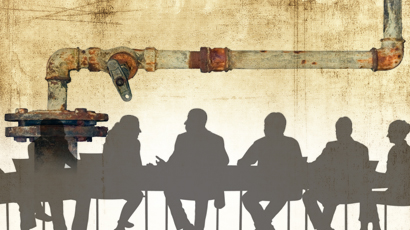
- 1921
- Boiler and Pressure Vessel Code Section III Boilers for Locomotives first issuance. (With the 1962 edition, this section was integrated into section I and the section III designation was later reassigned.)
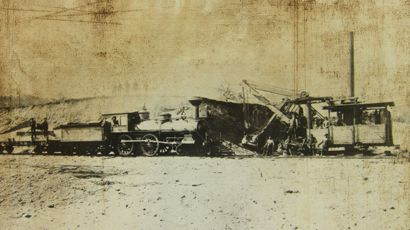
- January 1921
- Safety Code for Elevators first issuance, later to be known as A17.1.
- 1922
- Boiler and Pressure Vessel Code Section V Miniature Boilers first issuance. (With the 1962 edition, this section was integrated into section I and the section V designation was later reassigned.)
- January 1922
- Formation of the A17 Elevators and Escalators Committee.
- March 1922
- Formation of the B18 Standardization of Bolts, Nuts, Rivets, Screws, Washers, and Similar Fasteners Committee.
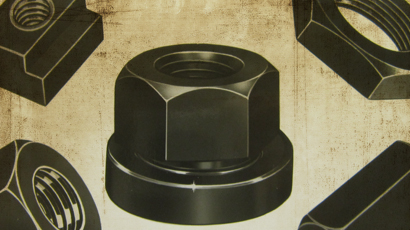
- March 1922
- The Boiler Code Committee directed that a new consecutive number be issued to each company holding a stamp for the purpose of registration.
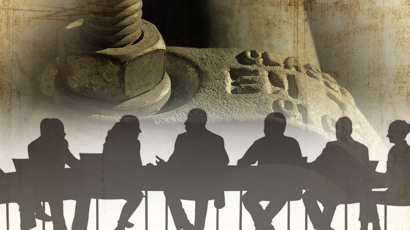
- September 1922
- Formation of the B5 Machine Tools Committee.
- November 1922
- Formation of a committee on Safety, forerunner to the Safety Board.

- 1923
- Boiler and Pressure Vessel Code Section IV Low Pressure Heating Boilers first issuance.
- 1924
- Boiler and Pressure Vessel Code Section II Material Specifications first issuance. (Until 1924, materials were included as part of section I.)
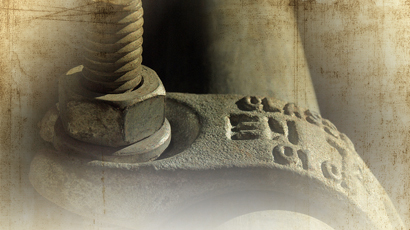
- 1924
- B1a American Standard Screw Threads for Bolts, Machine Screws, Nuts and Commercially Tapped Holes first issuance.

- 1925
- Boiler and Pressure Vessel Code Section VIII Unfired Pressure Vessels first issuance. (With the 1968 edition, this title was changed to Rules for Construction of Pressure Vessels, Division 1.)
- May 1925
- Formation of the Y14 Engineering Drawing and Related Documentation Practices Committee.

- June 1925
- Formation of the B30 Cableways, Cranes, Derricks, Hoists, Hooks, Jacks, and Slings Safety Committee.
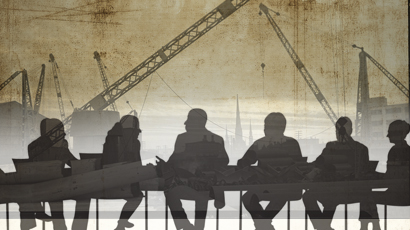
- March 1926
- Formation of the B31 Pressure Piping Committee.
- October 1926
- PTC 4 Test Code for Stationary Steam Generating Units first issuance.
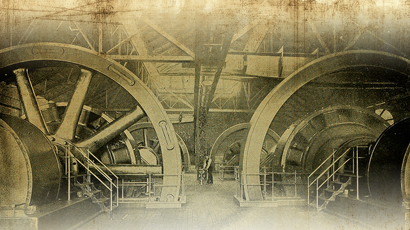
- June 1927
- B16e Steel Pipe Flanges and Flanged Fittings first issuance, precursor to and redesignated B16.5 in 1953.

- 1928
- American Engineering Standards Committee, AESC, reorganized as the American Standards Association, ASA, (later to be known as the American National Standards Institute, ANSI).

- April 1928
- PTC 6 Test Code for Steam Turbines first issuance.
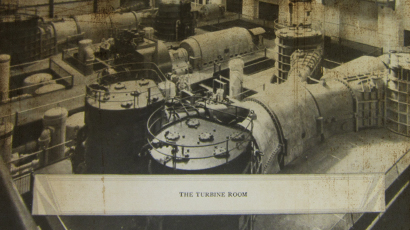
- October 1928
- The certification stamp used on vessels built and inspected under the Boiler and Pressure Vessel Code was altered, from the clover leaf with the letter S for all vessels by the clover leaf with S, L, H, M, or U to designate the section of the Boiler and Pressure Vessel Code under which it was inspected.
- December 1934
- Formation of the Advisory Board of Standards and Codes, consisting of a chairman from the ASME Council and one member from each of the following committees: Boiler Code, Standardization, Power Test Codes, and Safety.

- 1935
- B31.1 Code for Pressure Piping first issuance.
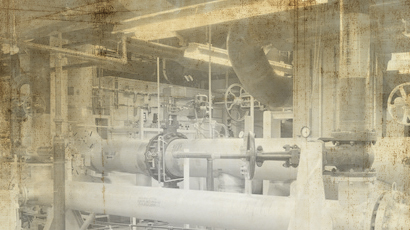
- 1937
- A17 American Recommended Practice for the Inspection of Elevators Inspectors Manual first issuance.
- 1937
- Boiler and Pressure Vessel Code Section IX Welding Qualifications first issuance. (This section was originally a supplement to section VIII, but with the 1941 edition the section was published separately.)
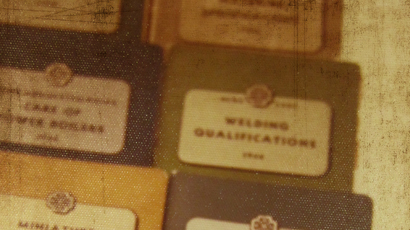
- September 1938
- Adoption of the Boiler and Pressure Vessel Code by Canada.
- August 1942
- At the request of the War Production Board, a special war committee was appointed and, functioning under War Standards Procedure, developed revised pressure temperature ratings for all pressure classes for steel pipe flanges and flanged fittings with the object of conserving essential war materials during the emergency of World War II. These revised ratings were published as American War Standard, B16e5-1943.
- 1943
- B30.2 Safety Code for Cranes, Derricks, and Hoists first issuance.
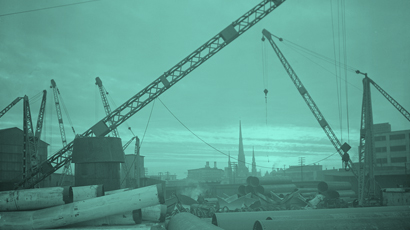
- 1945
- Formation of the PTC 22 Gas Turbine Power Plants Committee.
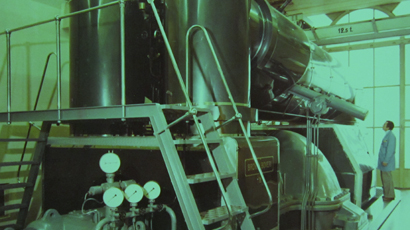
- February 1947
- International Organization for Standardization (ISO) formed

- December 1948
- The Boiler and Pressure Vessel Committee recommended to the ASME Performance (then Power) Test Codes Committee that a code be prepared on the testing of safety and relief valves. This request resulted in the publication of PTC 25 Pressure Relief Devices.

- 1953
- PTC 22 Gas Turbine Performance Test Code first issuance.
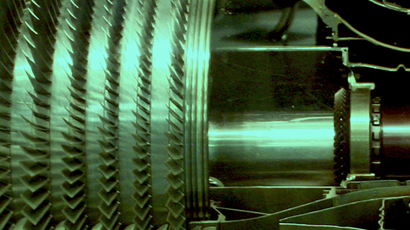
- August 1954
- The Atomic Energy Act of 1954 reversed the government monopoly and permitted the commercial use of atomic energy technology. Soon after, the US AEC began the task of writing regulation and devising licensing procedures for manufacturers and utility owners. The need for codes and standards in commercial nuclear power was created.
- 1955
- Due to the very extensive developments in the elevator design and construction, the A17 Elevators and Escalators Committee decided that the A17.1 standard should be completely rewritten and brought up to date.
- 1955
- The Boiler and Pressure Vessel Committee appointed a special committee on nuclear power, the predecessor to the Boiler and Pressure Vessel Code Section III Committee.
- July 1955
- Formation of the A112 Plumbing Materials and Equipment Committee.
- 1956
- The first coverage for nuclear power came in the form of Boiler and Pressure Vessel Code Cases. (1)
- 1963
- Boiler and Pressure Vessel Code Section III Nuclear Vessels first issuance.
- February 1963
- Formation of the B89 Dimensional Metrology Committee.
- 1965
- Conformity Assessment included nuclear vessels in its certification program.

- 1967
- Formation of the N45 Reactor Plants Committee (Later to be the Boiler and Pressure Vessel Section XI Committee).
- 1968
- Boiler and Pressure Vessel Code Section VIII Division 2 Alternative Rules for Construction of Pressure Vessels first issuance.
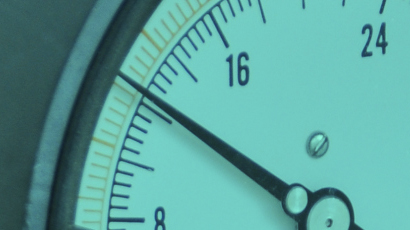
- 1968
- Boiler and Pressure Vessel Code Section X Fiber-Reinforced Plastic Pressure Vessels first issuance.
- 1968
- Code for Pumps and Valves for Nuclear Power first Issuance. (The standard would later be incorporated into section III.)

- 1968
- Conformity Assessment moved to a new “quality based system” for its certification programs, ASME gets involved in surveys/reviews.

- 1968
- American Standards Association, ASA, reorganized as the United States of America Standards Institute, USASI, (later to be known as the American National Standards Institute, ANSI)
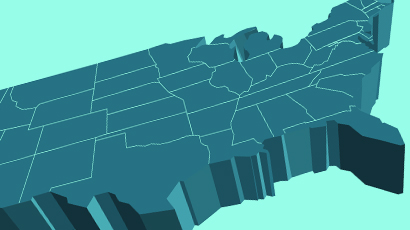
- 1968
- The Federal government decided to use the ASME voluntary codes and standards for the regulation of industry.
- 1969
- The N45 Reactor Plants Committee formed a committee on Quality Assurance Program Requirements, N45-3 (later to be called N45.2). This Committee was the precursor to the Nuclear Quality Assurance (NQA) Committee.
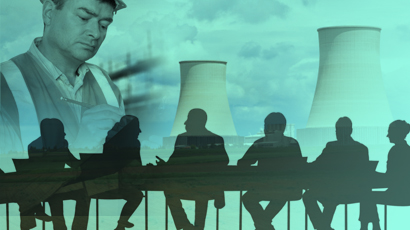
- October 1969
- United States of America Standards Institute, USASI, reorganized as the American National Standards Institute, ANSI.
- 1970
- Boiler and Pressure Vessel Code Section XI Rules for Inservice Inspection of Nuclear Power Plant Components first issuance.

- 1970
- Boiler and Pressure Vessel Code Section VI Recommended Rules for Care and Operation of Heating Boilers first issuance.

- 1971
- Boiler and Pressure Vessel Code Section V Nondestructive Examination first issuance.

- 1971
- Boiler and Pressure Vessel Code Section III Nuclear Vessels was completely revised and entitled Nuclear Power Plant Components.The 1971 edition of ASME BPV Section III marked the transition of the code from one covering only the vessel to covering the entire pressure system involved in a nuclear power plant.

- 1971
- N45.2 Quality Assurance Program Requirements for Nuclear Power Plants first issuance. The first quality assurance standard published and would later be incorporated into NQA-1 Quality Assurance Requirements for Nuclear Facility Applications.

- 1971
- The N45 Reactor Plants Committee formed a committee to develop standards for high reliability air cleaning equipment for nuclear facilities, N45.8. This Committee would later evolve into the Nuclear Air and Gas Treatments (CONAGT) Committee.

- September 1972
- ASME expanded its Conformity Assessment accreditation program from North America (United States of America and Canada) to the rest of world.

- November 1972
- The first company to be issued a certificate internationally.
- 1974
- Congress passed the Energy Reorganization Act which divided the US AEC into the U.S. Energy Research and Development Administration and the modern-day U.S. Nuclear Regulatory Commission (NRC).

- December 1974
- B18 Standardization of Bolts, Nuts, Rivets, Screws, Washers, and Similar Fasteners Committee authorized the preparation of a series of standards for metric fasteners.

- 1975
- Formation of the Nuclear Power Codes and Standards Supervisory Committee (now known as the Nuclear Board).

- 1975
- Formation of the Operation and Maintenance of Nuclear Power Plants (O&M) Committee.
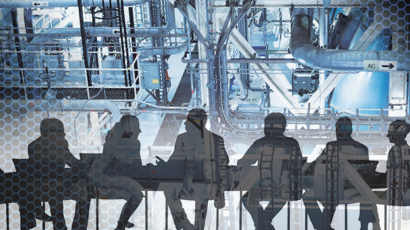
- 1976
- Formation of the Committee on Cranes for Nuclear Power Plants (later to be Facilities).

- 1976
- Formation of the Nuclear Air and Gas Treatment (CONAGT) Committee.

- 1979
- NQA-1 Quality Assurance Program Requirements for Nuclear Power Plants first issuance.

- January 1981
- Issuance of the OMB Circular A-119, Federal Participation in the Development and Use of Voluntary Standards. Federal government moves out of the standards writing business and turn the job over to the private sector to maximum extent possible.

- November 1981
- Formation of the Elevator Inspector Certification Organizations (QEI) Committee.

- 1982
- Formation of the Qualification of Mechanical Equipment in Nuclear Power Plants (QME) Committee.

- 1983
- ASME Boiler and Pressure Vessel Code issued in both conventional and metric units.

- 1983
- NOG-1 Rules for Construction of Overhead and Gantry Cranes first issuance.
- 1984
- QEI-1 Standard for the Qualification of Elevator Inspectors first issuance.

- 1985
- AG-1 Code on Nuclear Air and Gas Treatment first issuance.

- 1987
- The Operation and Maintenance of Nuclear Power Plants Committee consolidated their five previously published standards into a single standard Operation and Maintenance of Nuclear Power Plants (O&M).

- October 1988
- Formation of the Y14.5.2 Subcommittee on Certification. The Subcommittee was instructed to develop a standard that could be used as the basis of an ASME Program for Certification of Geometric Dimensioning and Tolerancing Professionals (GDTP).

- 1989
- Boiler and Pressure Vessel Code published on CD-ROM.

- June 1989
- Formation of the Bioprocessing Equipment Standards Committee (BPE).

- June 1991
- Formation of the Overall Power Plant Performance Committee (PTC 46).

- 1992
- Authorized Inspection Agencies (AIAs) have been required to be accredited by ASME for nuclear applications.

- 1994
- QME-1 Qualification of Active Mechanical Equipment Used in Nuclear Power Plants first issuance.

- 1994
- QHO-1 Qualification and Certification of Hazardous Waste Incinerators first issuance.

- 1995
- Formation of the Post Construction Committee (PCC).
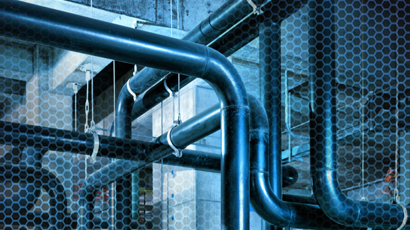
- 1995
- The US NRC adopted a policy statement that encouraged the broad application of Probabilistic Risk Assessment (PRAs) in the regulatory process.

- January 1995
- Y14.5.1M Mathematical Definition of Dimensioning and Tolerancing first issuance. (Created explicit definitions for use in such areas as Computer Aided Design (CAD) and Computer Aided Manufacturing (CAM).)

- May 1996
- Y14.5.2 Certification of Geometric Dimensioning and Tolerancing Professionals first issuance. ASME established Geometric Dimensioning and Tolerancing Professional (GDTP) Certification Program.

- 1997
- Bioprocessing Equipment Standard (BPE) first issuance.

- 1997
- Boiler and Pressure Vessel Code Section VIII, Division 3 Alternative Rules for Construction of High Pressure Vessels first issuance.
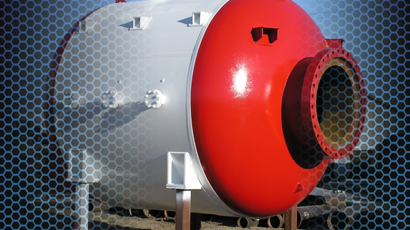
- 1997
- Authorized Inspection Agencies (AIAs) have been required to be accredited by ASME for boilers and pressure vessels.
- October 1997
- PTC 46 Performance Test Code on Overall Plant Performance first issuance.
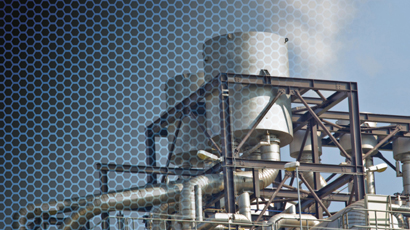
- 1998
- Formation of the Nuclear Risk Management (CNRM) Committee to develop a Probabilistic Risk Assessment (PRA) standard.
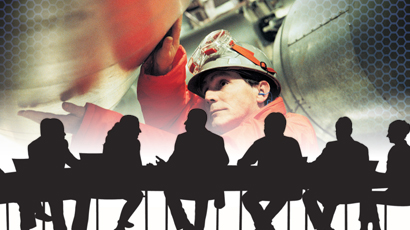
- 2000
- PCC-1 Guidelines for Pressure Boundary Bolted Flange Joint Assembly first issuance.

- September 2000
- C&S Connect (online balloting and tracking system) launched for Boiler and Pressure Vessel Committees.
- 2001
- Formation of a joint ASME and American Petroleum Institute Fitness-For-Service Joint Committee to develop and maintain a Fitness-For-Service standard, API 579-1/ASME FFS-1 Fitness-For-Service, for equipment operated in a wide range of process, manufacturing and power generation industries.

- 2002
- RA-S Standards for Probabilistic Risk Assessment for Nuclear Power Plant Applications first issuance, ASME’s first risk informed standard.

- 2004
- Boiler and Pressure Vessel Code Section XII Rules for Construction and Continued Service of Transport Tanks first issuance.

- 2004
- The ASME Nuclear Board and American Nuclear Society (ANS) Standard Board mutually agreed to form a Nuclear Risk Management Coordinating Committee (NRMCC).

- August 2004
- ASME Standards Technology, LLC (ASME ST-LLC) established as a separate not-for-profit organization, with the mission of providing ASME’s standards development committees with the technical basis necessary to develop new products for emerging technologies.

- 2005
- A112.18.1/CSA B125.1, Plumbing Supply Fittings issued, a fully bi-national standard between ASME A112 Plumbing Materials and Equipment Committee and the CSA B125 Plumbing Fittings Technical Committee.

- December 2006
- V&V 10 Guide for Verification and Validation in Computational Solid Mechanics first issuance.

- 2007
- Formation of the ASME Asia Pacific LLC and a representative office was opened in Beijing, China, to advance understanding and use of ASME codes, standards, and related conformity assessment programs.

- June 2007
- API 579-1/ASME FFS-1 Fitness-For-Service first issuance.
- April 2007
- A17.7/CSA B44.7, Performance Based Safety Code for Elevators and Escalators issued, a fully bi-national standard between ASME A17 Elevator and Escalator Committee and the CSA B44 Elevator Safety Code Technical Committee.

- 2007 and 2008
- The Shanghai Power Equipment Research Institute, working in agreement with ASME, translated Boiler and Pressure Vessel Code Sections III and XI into the Chinese language.
- 2008
- Conformity Assessment reached a milestone of certifying more than 5,000 manufacturers in 75 nations.

- 2009
- Formation of the Committee on Reliability, Availability, and Maintainability of Power Plants (RAM).

- July 2010
- Addenda subscription no longer being used in ASME standards.
- 2011
- Debut of a new online system (CA Connect) to process Conformity Assessment product certifications.

- July 2011
- Boiler and Pressure Vessel Certification moves from 28 separate ASME product certification marks to a single comprehensive mark.

- October 2011
- Formation of the Committee on Nonmetallic Pressure Piping Systems.

- 2012
- Beginning of (BPE) Bioprocessing Equipment Certification Program.

- October 2013
- RAM-1 Reliability, Availability, and Maintainability of Equipment and Systems in Power Plants first issuance.

- June 2015
- Formation of the Standards Committee on Safety Codes and Standards for Thermal Energy Storage Systems (TES).
- July 2015
- Boiler and Pressure Vessel Certification adds the Parts Fabrication (PRT) and High Pressure Vessel Pressure Relief Devices [Rupture Disks] (UD3) Certification Programs.
- July 2016
- Formation of the Standards Committee, Boiler Code Section XIII, Rules for Overpressure Protection.
- November 2016
- Formation of the Standards Committee on Manufacturing and Advanced Manufacturing (MAM).
Notes:
To learn more about interpretations and cases visit the Contact Committees page.